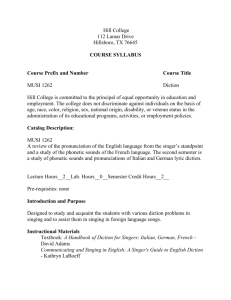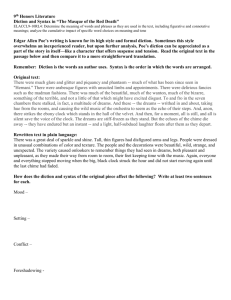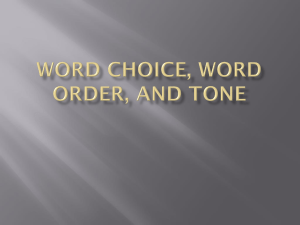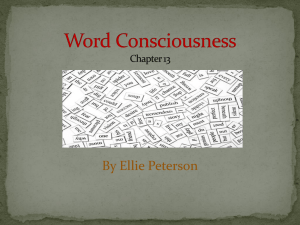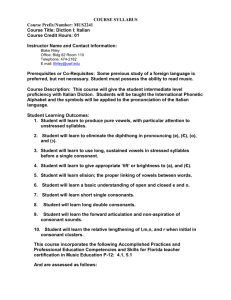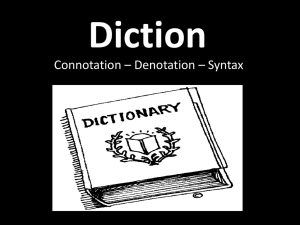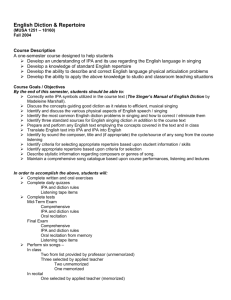File
advertisement
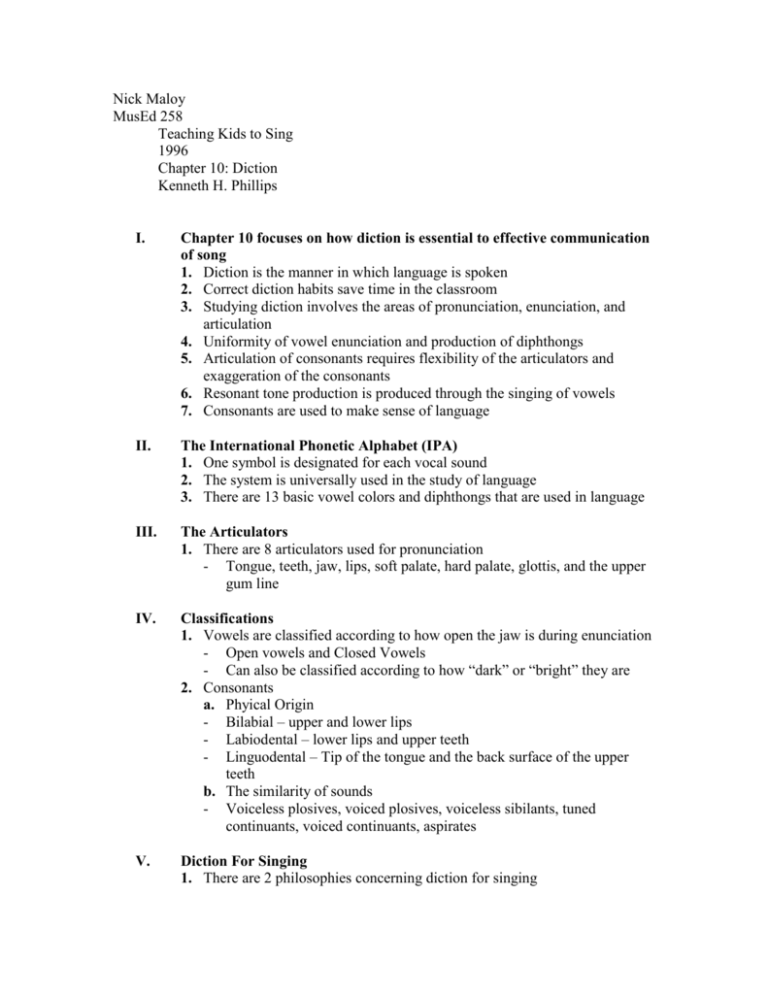
Nick Maloy MusEd 258 Teaching Kids to Sing 1996 Chapter 10: Diction Kenneth H. Phillips I. Chapter 10 focuses on how diction is essential to effective communication of song 1. Diction is the manner in which language is spoken 2. Correct diction habits save time in the classroom 3. Studying diction involves the areas of pronunciation, enunciation, and articulation 4. Uniformity of vowel enunciation and production of diphthongs 5. Articulation of consonants requires flexibility of the articulators and exaggeration of the consonants 6. Resonant tone production is produced through the singing of vowels 7. Consonants are used to make sense of language II. The International Phonetic Alphabet (IPA) 1. One symbol is designated for each vocal sound 2. The system is universally used in the study of language 3. There are 13 basic vowel colors and diphthongs that are used in language III. The Articulators 1. There are 8 articulators used for pronunciation - Tongue, teeth, jaw, lips, soft palate, hard palate, glottis, and the upper gum line IV. Classifications 1. Vowels are classified according to how open the jaw is during enunciation - Open vowels and Closed Vowels - Can also be classified according to how “dark” or “bright” they are 2. Consonants a. Phyical Origin - Bilabial – upper and lower lips - Labiodental – lower lips and upper teeth - Linguodental – Tip of the tongue and the back surface of the upper teeth b. The similarity of sounds - Voiceless plosives, voiced plosives, voiceless sibilants, tuned continuants, voiced continuants, aspirates V. Diction For Singing 1. There are 2 philosophies concerning diction for singing - Sung-speech diction - Rhythmic diction 2. There is currently debate on which type of diction is more beneficial VI. Singing in Foreign Languages - This should be encouraged for students, regardless of age - It is essential that teachers are able to provide an accurate vocal model using proper IPA for students to follow VII. Problems With Pronunciation - Problems with pronunciation can range from things like scooping to sliding as well as miss-pronunciation of consonants or vowels VIII. Diction Training - This part of the chapter provides several exercises for working on diction as well as an outline for producing vocal tract freedom. Discussion: As singers, it is essential that teachers be able to understand proper diction and diction syllables. Teachers can only be successful if their students are taught these basic skills effectively. This chapter provided some very helpful exercises that can be used in the process of trying to effectively teach students proper diction.

